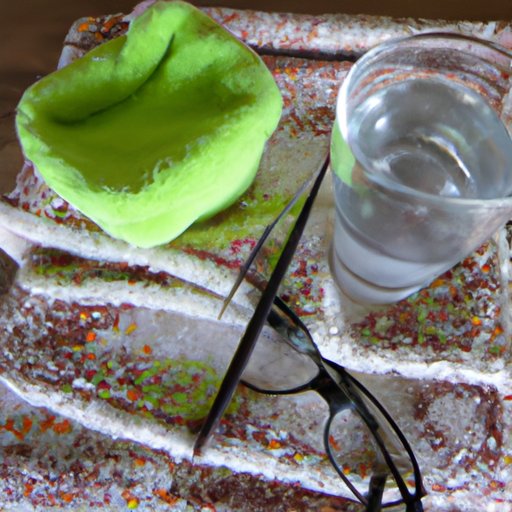Introduction
Fever is a common symptom of illness that can be caused by a variety of conditions. A fever is defined as a body temperature higher than normal range, which is typically 98.6°F (37°C). Fevers can range from mild to severe and are usually accompanied by other symptoms such as chills, body aches, fatigue, and headache. It’s important to note that a fever itself isn’t an illness, but rather a sign that something else is going on in the body.

Taking a Lukewarm Bath or Shower to Lower Body Temperature
One of the most effective ways to reduce a fever is to take a lukewarm bath or shower. Lukewarm water helps to lower body temperature by cooling down the skin, which causes the body to release heat. Taking a lukewarm bath or shower for 15-20 minutes can help to reduce body temperature and make you feel more comfortable. It’s important to note that the water should not be too cold, as this could cause the body to go into shock.
When taking a lukewarm bath or shower, it’s important to make sure that the water is not too hot or too cold. The water should be just warm enough to make you feel comfortable. Additionally, it’s important to avoid getting too hot while in the bath or shower, as this can actually raise your body temperature and make the fever worse. Finally, it’s important to keep the bathroom well ventilated while bathing or showering, as steam can make it harder to cool down.

Drinking Plenty of Fluids to Stay Hydrated
Staying hydrated is essential when trying to reduce a fever. Drinking plenty of fluids helps to replenish lost electrolytes and can also help to reduce body temperature. Water is the best choice for staying hydrated, but other fluids such as sports drinks, juice, and herbal teas can also be beneficial. It’s important to avoid caffeinated beverages, as caffeine can act as a diuretic and cause dehydration.
When trying to stay hydrated, it’s important to drink small amounts of fluids often throughout the day. This will help to ensure that your body is getting enough fluids without overloading your system. Additionally, if possible, try to drink fluids that contain electrolytes, as these can help to replenish lost minerals and help to reduce fever.
Placing a Cool, Damp Cloth on Your Forehead
Placing a cool, damp cloth on your forehead can help to reduce fever by cooling down your skin. Cool water can help to lower body temperature by drawing heat away from the skin, which causes the body to release heat. Placing a cool, damp cloth on your forehead for 15-20 minutes can help to reduce body temperature and make you feel more comfortable.
When using a cool, damp cloth, it’s important to make sure that the water is not too cold, as this could cause the body to go into shock. Additionally, it’s important to avoid getting too cold while using the cloth, as this can actually raise your body temperature and make the fever worse. Finally, it’s important to replace the cloth with a fresh one every few hours, as the cloth can become saturated and less effective over time.
Using an Over-the-Counter Fever Reducer
Taking an over-the-counter fever reducer can help to reduce fever quickly and effectively. Common fever reducers include ibuprofen and acetaminophen, both of which can help to reduce body temperature and make you feel more comfortable. It’s important to follow the instructions on the package carefully and only take the recommended dosage.
When taking an over-the-counter fever reducer, it’s important to make sure that you are not allergic to the medication. Additionally, it’s important to avoid taking more than the recommended dosage, as this can cause serious side effects. Finally, it’s important to talk to your doctor before taking an over-the-counter fever reducer, especially if you are pregnant or breastfeeding.
Getting Plenty of Rest and Avoiding Physical Activity Until Fever Subsides
Finally, it’s important to get plenty of rest and avoid physical activity until the fever subsides. Resting helps to conserve energy and allows the body to focus its energy on fighting off the illness. Additionally, avoiding physical activity helps to prevent the body from overheating, which can make the fever worse. When resting, it’s important to keep the room cool and well ventilated to help reduce body temperature.
When trying to get enough rest, it’s important to make sure that you are sleeping in a comfortable position. Additionally, it’s important to avoid activities that may cause the body to overheat, such as exercising or taking hot showers. Finally, it’s important to talk to your doctor before engaging in any physical activity, even after the fever has subsided.
Conclusion
In conclusion, there are several ways to reduce fever at home. Taking a lukewarm bath or shower, drinking plenty of fluids, placing a cool, damp cloth on your forehead, using an over-the-counter fever reducer, and getting plenty of rest are all effective ways to reduce fever. It’s important to remember that if the fever persists or worsens, it’s important to seek medical attention.


